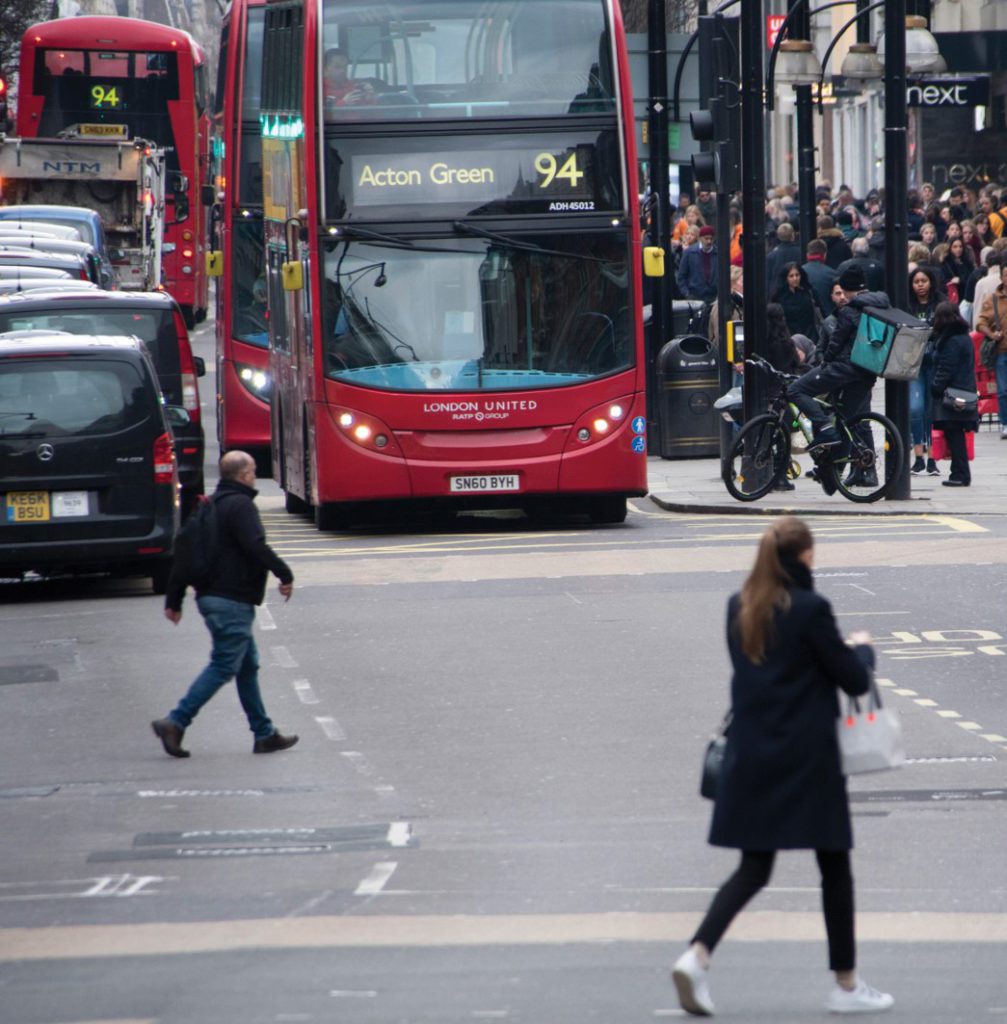Hopes and doubts on Oxford Street pedestrianisation
London Mayor Sadiq Khan has announced a new plan for the full pedestrianisation of Oxford Street—one of the major shopping venues of the whole country. While the intervention supports the reclaim of public space, it is not exempt from criticism.
On his third consecutive mandate, Sadiq Khan is once again pushing for a radical transformation of the famous Oxford Street in the UK capital. Since his first attempt in 2017, political winds have turned in his favour and this time it seems like he will be able to accomplish this ambitious plan despite some criticism.
A transformation long in the making
The first proposal for making Oxford Street solely accessible to pedestrians dates back to 2004 and came from liberal-democrat mayoral candidate, Simon Hughes. Since then, the traffic in this major London artery has been restricted to public transport and taxis, which can circulate from 7:00 to 19:00, with the same limitation applied to bikes.
The new plan—first launched on 17 September—wants to go all-in closing the street to everyone but pedestrians 24/7.
Oxford Street is at the heart of London, and I’m excited to share our plans to pedestrianise this iconic street, creating a world-class public space.
This move will make the street more welcoming for visitors and shoppers. pic.twitter.com/duoCj4d7G6
— Mayor of London, Sadiq Khan (@MayorofLondon) September 22, 2024
In 2017, Khan's plan was quite easily dismissed by the Conservative forces then in power. Now, political balances are quite different, with the Labour Party at the head of both the state and local government. Labours have achieved majority in the assembly of the City of London and of the Westminster borough (which has historically been recognised city status).
Initially, the pedestrianisation will concern the 1.1 km stretching between Marble Arch and Oxford Circus metro stops. According to British media, this first step of the plan could be completed by 2027. After that, the same measures will be extended up to the crossing with Tottenham Court Road, thus covering the full length of the street (1.9 km).
The long-brooded urban regeneration plan will be handled by an ad hoc body, called the 'Mayoral Development Area', and is supposed to revitalise the street by attracting more visitors and creating new jobs. Provisional estimates suggest the whole plan could cost up to €178 million, a portion of which would—ideally— be contributed by the Oxford Street shop owners.
Ideological opposition and realistic criticism
As could be expected, Conservatives have criticised the plan, responding with their version of ideological opposition to the alleged Labourist ideological opposition to cars.
The content of their objections touches mostly on two points: ungrounded worries about pedestrianisation killing the street's commercial life by pushing visitors away and fostering security concerns that spread over the summer as a result of a TikTok trend which caused hours of chaos in the street (and elsewhere), and of investigations on illegal activities in some shops that had popped up in the street after COVID-19 pandemic-driven closures.
This strand of criticism was foreseen, but the plans also raised a few eyebrows by actors who would generally be in favour of reclaiming public space from car traffic.
One example is Westminster's borough council itself, which had been working for two years on a €100 million-worth regeneration plan, co-funded by the New West End Company, which would improve street lighting, introduce new benches and over 64 pedestrian crossings.
Even if less transformative, the council plan was going in a similar direction to Kahn's vision. This is why the fact that the mayor only informed council advisors of his intention shortly before the public announcement was frowned on as an overstepping.
A different line of criticism came from a spokesperson of the NGO Inclusion London, who drew attention to the issue of accessibility for people with reduced mobility. Their call is to make sure to take into consideration the mobility needs of all people—something that could only strengthen the positive impacts of pedestrianisation. If this input will be taken up by Khan remains to be seen.
What is for sure is that all eyes of sustainable urban mobility experts are on Oxford Street.

